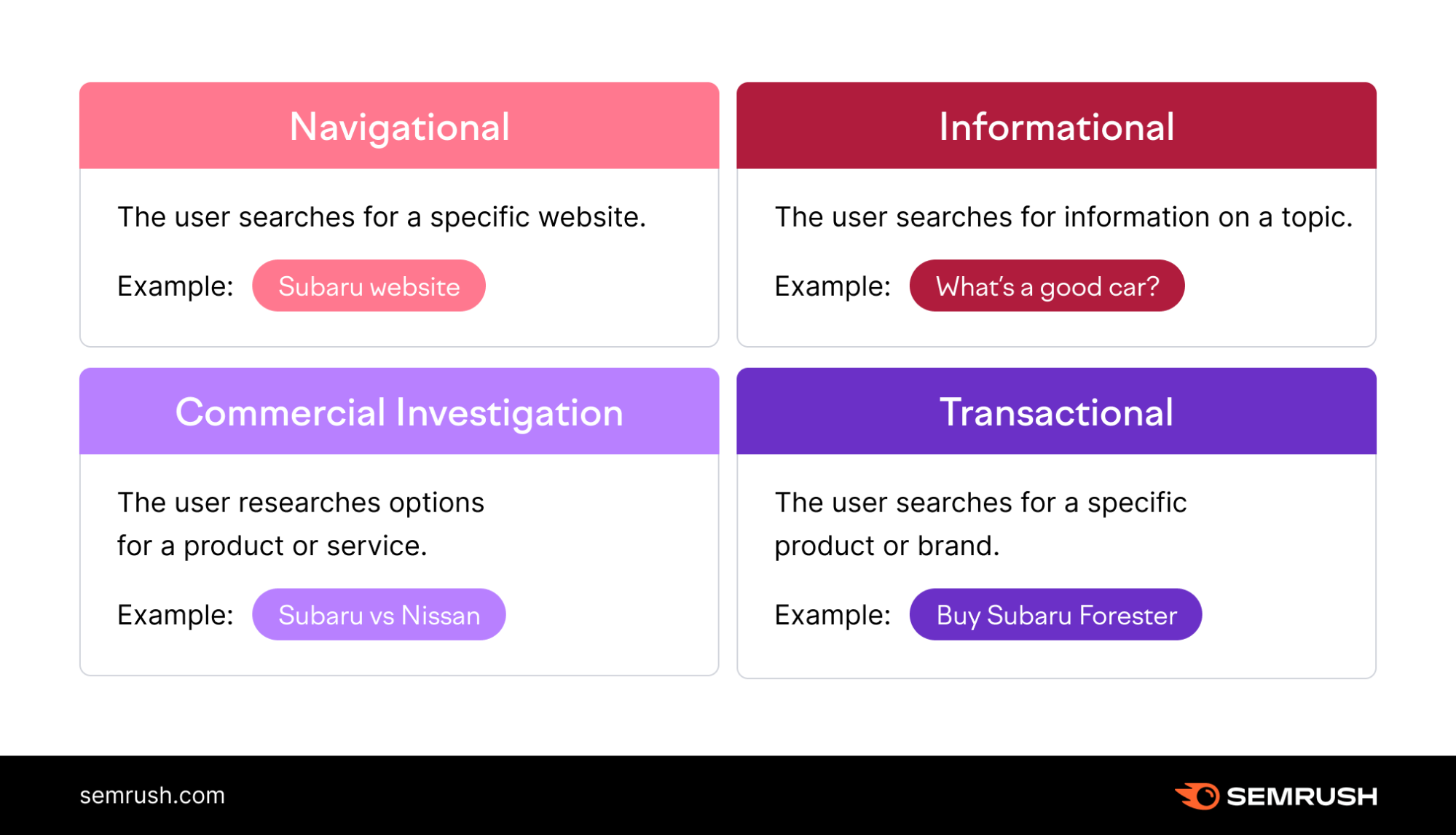A2102 Insights
Explore the latest trends and news on technology, lifestyle, and more.
Decoding the Mind of Searchers
Unlock the secrets of searcher behavior! Discover what drives clicks and how to optimize your content for maximum engagement.
Understanding Search Intent: What Drives Users to Your Content?
Understanding search intent is crucial for creating content that resonates with your audience. It refers to the underlying motivation behind a user's search query, guiding them to find specific information, products, or services. By analyzing search intent, content creators can tailor their articles to meet the needs of users at different stages of their journey—whether they are simply seeking information, comparing options, or ready to make a purchase. The primary types of search intent are categorized as informational, navigational, transactional, and commercial investigation, each reflecting distinct user goals.
To fully leverage search intent, it's essential to conduct thorough keyword research and understand the questions users are asking. Tools like keyword planners and user feedback can provide insights into common queries that lead to your content. Incorporating relevant keywords into your headings, subheadings, and body content can enhance visibility and engagement. Ultimately, aligning your content strategy with user intent not only improves your SEO performance but also fosters trust and satisfaction among your audience, encouraging them to return for more.

The Psychology Behind Search Queries: Decoding User Behavior
The psychology behind search queries is a fascinating aspect of user behavior that can greatly impact search engine optimization (SEO) strategies. When users type in specific queries, they often have underlying motivations, emotions, or needs driving their searches. Understanding this user behavior can help marketers create content that resonates with their audience. For instance, users searching for solutions to problems are typically looking for immediate answers, while others may be exploring their options. By recognizing these nuances, businesses can tailor their content accordingly, leading to higher engagement and conversion rates.
Moreover, the decoding of user behavior also involves analyzing the language and phrases users employ in their queries. Simple keywords can signal a straightforward informational intent, while long-tail keywords may indicate a more specific inquiry or desire for detailed content. By analyzing these patterns, businesses can optimize their content for different stages of the user journey. For example, a consumer researching a product might use terms like ‘best’ or ‘top-rated’ during the awareness stage, whereas someone closer to making a purchase might search for ‘buy’ or ‘discount.’ Understanding these psychological drivers is crucial for crafting SEO strategies that effectively connect with users.
How to Align Your Content with the Mindset of Searchers
To effectively align your content with the mindset of searchers, you first need to understand their intent. Searchers typically fall into three categories: informational, navigational, and transactional. By identifying which type your audience falls under, you can create content that addresses their specific needs. For instance, if a user is seeking information, consider providing detailed guides or how-to articles that can solve their queries. For transactional intent, focus on product reviews or comparison articles that facilitate purchasing decisions.
Additionally, using keyword research is crucial for connecting with your audience’s mindset. Tools like Google Keyword Planner or SEMrush can help you find the phrases and questions people are typing in. Incorporate these keywords naturally into your content, including in headings and subheadings, to improve visibility on search engines. Also, don’t forget to optimize your meta descriptions and title tags to reflect the searcher's intent, making your content more compelling and increasing click-through rates.